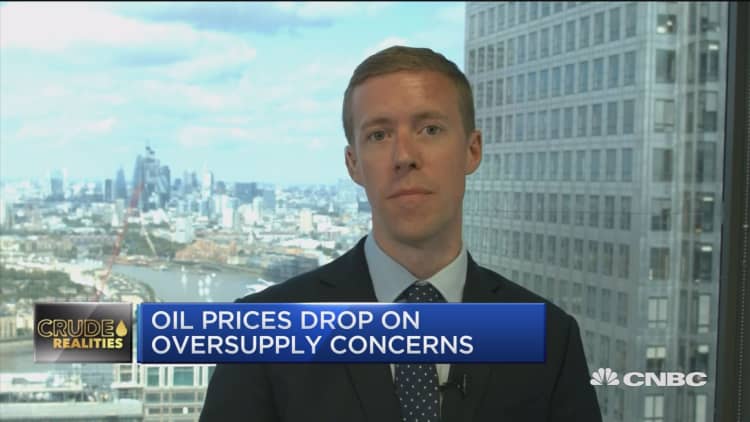Oil prices fell on Tuesday, pushing crude benchmarks to their largest monthly decline in two years as OPEC's output appeared to reach a 2018 high in July.
U.S. West Texas Intermediate crude futures (WTI) ended Tuesday's session down $1.37, or 2 percent, at $68.76 a barrel, after rising more than 2 percent in the previous session.
September Brent crude futures fell 73 cents, or 1 percent, to $74.24 a barrel by 1:29 p.m. ET after rising nearly 1 percent on Monday. The September contract expires later on Tuesday and the more-active October contract was down $1.33 at $74.22.
For the month, WTI futures declined 7.3 percent, while Brent futures were set to drop 6.5 percent. Both benchmarks posted the biggest monthly decline since July 2016.

A survey showed OPEC's output hit a 2018 high in July, reigniting concern about supply swamping demand.
The Reuters survey released on Monday suggests that OPEC increased production in July by 70,000 barrels per day (bpd) to 32.64 million bpd, a high for the year.
Meanwhile, Russian energy minister Alexander Novak said last week that Russia's output will hit a new 30-year high of 11.02 million bpd IN 2018.
"On the supply side, the latest news from Russia shows they increased production by around 300,000 bpd ... as well as an increase in production in the OPEC survey," Saxo Bank senior manager Ole Hansen said.
"The global balance (between supply and demand) has softened and has been less tight in July, hence the sell-off we've seen."
OPEC has pledged to offset the loss of Iranian supply as upcoming U.S. sanctions have already started to cut exports from OPEC's third-largest producer.
U.S. President Donald Trump appeared to soften his approach to Iran, saying on Monday he would be willing to meet with President Hassan Rouhani without any preconditions. Just a week ago Trump threatened on Twitter to unleash severe consequences on Iran.
Iranian officials rejected the proposal, urging Trump to first make up for withdrawing from the multilateral nuclear deal that the U.S. had been a part of.

The developments fed into the oil selloff, said Phil Flynn, analyst at Price Futures Group in Chicago.
"I think we went from getting ready to price in a total loss of Iranian exports to maybe, just maybe, we wont lose any exports, depending on whether or not the Iranians take Donald Trump up on his offer," Flynn said.
The United States has indicated that it wants Iranian exports cut to zero under the sanctions it pledged to reintroduce in May and that would go fully into effect in November.
Oil prices are likely to hold fairly steady this year and next as increased output from OPEC and the U.S. meets growing demand led by Asia and helps to offset supply disruptions from Iran and elsewhere, a Reuters poll showed on Tuesday.
Weekly U.S. inventory data is scheduled for release beginning on Tuesday with the American Petroleum Institute (API), an industry group, followed by the U.S. Department of Energy's Energy Information Administration (EIA) on Wednesday.
Six analysts polled ahead of these reports estimated, on average, that crude stocks fell by about 3.2 million barrels in the week ended July 27.
— CNBC's Tom DiChristopher contributed to this report.

